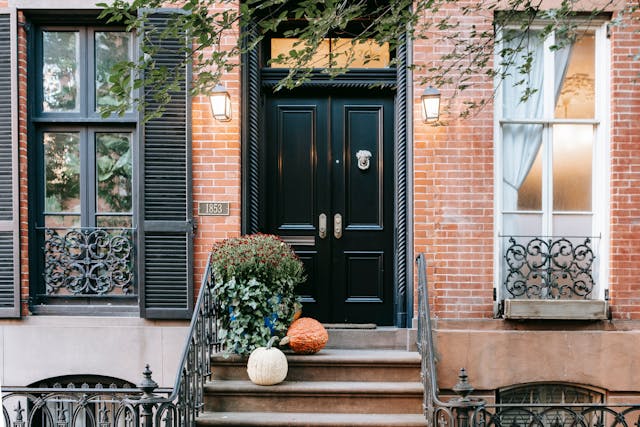Door Jamb vs Door Frame Understanding the Key Differences

There are many parts to consider when constructing or renovating a house, like a Door jamb vs door frame. A door or window frame has several parts, the most important being the Door jamb vs door frame. Confusing install recovery terminology could lead to unnecessary expenses and inconvenience.
The difference between a door jamb and a door frame, as well as offering client advice on choosing the best options for their projects will be explained in this article. Affordable yet professional solutions await every contractor or DIY enthusiast, knowing full well how crucial doors are when it comes to home construction.
Table of contents
What is a Door Jamb?
A door jamb indicates the vertical section that constitutes the sides of the door frame. It is that portion of the door frame which carries the door and is usually fastened to the wall. The frame portion includes various components which help in the proper functioning of the door swinging open and closing shut. In a standard arrangement involving a door, the frame consists of:
Side jambs: These are the two vertical sections of the door frame which hold the door from both sides.
Head jamb: This is the upper horizontal section connecting the side jambs.
Sill (or bottom jamb): This is the lower section of the door frame. Also called the threshold, it serves to minimize the entry of water and other unwanted debris inside.
Why is Door Jamb Important Aspects?
Stability and Lifespan: The door jamb is important as it enables the door to be effectively fastened in place providing structural support as well as resistance to wear and tear over time.
Aesthetic Appeal: The shape and pattern along with material for the door jamb adds to the beauty of the door and enhances the room which adds to the aesthetic appeal of your house.
Functionality: Smooth operation of the door is granted by the door jamb being properly installed, ensuring that the door opens and closes without gaps or friction.
What is a Door Frame?
A door frame is the overall structure supporting a door which is composed of two door jambs, a head jamb, sill, and other components forming it. Everything that is involved in dicho door is in aligned To the wall.
A door frames is also described as bearing the following features:
Trim or casing: These are decorative elements placed over the edges of the frame to enhance the overall finishing and present sophistication.
Threshold: Refers to the horizontal section that marks the lower sections of the frame. This element is mostly found in exterior doors, and serves the purpose of preventing moisture and draughts.
What makes the Door Frame essential?
Frame integrity: Timely inspection and protective maintenance serves to extend the life spam of the door. Hence, a flore can tehanicial services on any dorr as long as its services are handled by the professionals.
Security applications: Strength and flexibility are very important attributes of a door. A wooden door remains light hence attainable. Alongside a trimmed aluminum or metal frame makes the door blend with style while giving it unbending integrity.
Door Jamb vs. Door Frame: Key Differences
Now that we understand the individual functions of a Door jamb vs door frame, let’s break down the primary differences:
| Feature | Door Jamb | Door Frame |
| Definition | Vertical sides of the door frame | Complete structure of the door |
| Components | Side jambs, head jamb, sill | Includes jambs, trim, thresholds |
| Function | Supports the door | Encloses and supports the door |
| Material | Wood, steel, or composite | Often wood, aluminum, or PVC |
| Position | Inside the frame | Surrounds the door opening |
| Application | Used in both interior and exterior doors | Typically for both interior and exterior doors |
When to Use a Door Jamb vs. Door Frame
Choosing between a Door jamb vs door frame is not always a matter of selection, as they are both essential components in the installation of any door. However, understanding when each term applies and how they work together can help guide your decision-making:
When to Choose a Door Jamb:
- Renovations: If you are simply replacing or repairing a door, you may only need to replace the door jamb, especially if the rest of the frame is still intact.
- Custom Doors: For custom-built doors, the jamb can be tailored to fit the exact size and design of the door, providing a more personalized solution.
When to Choose a Door Frame:
- New Construction: If you are building a new doorway, the complete door frame will be necessary to create the structural support for the door.
- Exterior Doors: For doors exposed to outdoor elements, a robust door frame with additional weather-resistant features is essential for sealing and durability.
Selecting the Appropriate Materials for Door Jamb and Frame
To preserve the functionality and ensure seamless operation of your door, both the door jamb and door frame must be made from robust and durable materials. Here is an overview of various materials and their characteristics:
Wood: Widely employed in interior doors, wooden door jambs and frames are familiar for their traditional appeal alongside customization options. While they offer excellent insulation and aesthetics, upkeep is essential.
Steel: Steel frames and jambs are common for external doors due to their enhanced security features and protection from weather damage. Though reliable, they lack the warmth and style offered by wooden constructions.
Composite Materials: To achieve an aesthetic optiom while ensuring strength is maintained, fiberglass and PVC are considered composite materials. These composites are weather-resistant and require less upkeep than wood.
Conclusion
As previously elaborated with illustrations, knowing the distinctions within slang terms like Door jamb vs door frame may help you make informed choices for your installation. The vertical section which supports the door is called the door jamb, whereas the frame contains the complete assembly that encloses the door. Replacement and repair choices together with proper material selection, routine maintenance, and regular repairs can preserve the functionality and lifetime of your doors.





